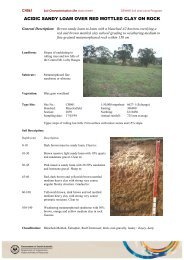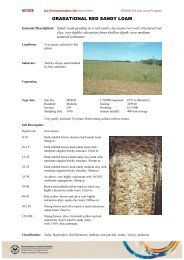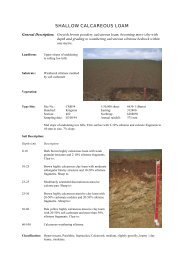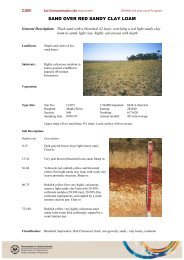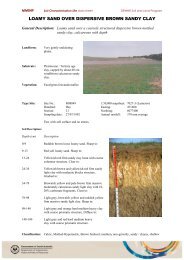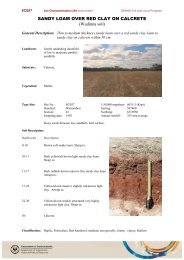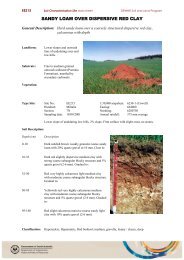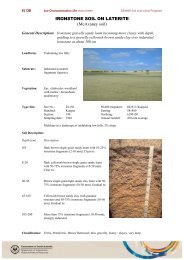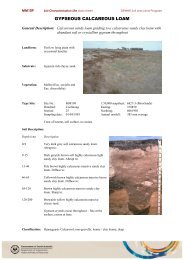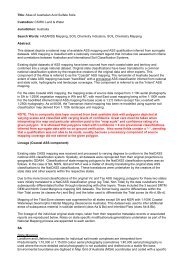You also want an ePaper? Increase the reach of your titles
YUMPU automatically turns print PDFs into web optimized ePapers that Google loves.
5 Accuracy, precision and a basis for statinguncertainty5.1 RationaleEstimates of uncertainty for each attribute in <strong>ASRIS</strong> are needed to encourage more appropriate use of dataon soil and land resources. Uncertainty estimates are essential for tracking propagation of errors in variousforms of analysis, particularly simulation modelling (e.g. Heuvelink 1998, Moss and Schneider 2000,Minasny and Bishop 2008). In many instances, the information on uncertainty generated by a model is asimportant as the prediction itself.As far as possible, we have followed guidelines from the National Institute of Standards and Technology forevaluating and expressing uncertainty (Taylor and Kuyatt 1994, http://physics.nist.gov.cuu/Uncertainty).Type A evaluations of standard uncertainty are based on any valid statistical method for treating data.These are not common in Australian soil and land resource survey. An example would be estimation ofuncertainties in carbon or pH based on stratified random sampling of a land-unit tract.Type B evaluations of standard uncertainty are based on scientific judgement using all the relevantinformation available, which may include:• previous measurements on related soils• experience with, or general knowledge of, the behaviour and properties of the relevant soils andmeasurement methods (e.g. accuracy of laboratory determinations and field description methods,reliability of pedotransfer functions)• uncertainties published in reviews of spatial variation in soils (e.g. Beckett and Webster 1971,Wilding and Drees 1983, McBratney and Pringle 1999)5.2 Estimating uncertaintyMost estimates of uncertainty in <strong>ASRIS</strong> rely on Type B evaluations. The estimate depends on themeasurement scale, assumed probability distribution, and likely variation for each attribute.Continuous variables with an assumed Normal probability distribution have their uncertainty representedby an estimated standard deviation. This is denoted by u i and u j for Type A and B evaluations respectively.In most cases, an attribute’s uncertainty will arise from several sources and the combined standarduncertainty (u c ) is reported. There are many issues to resolve in calculating u c . We assume the componentvariances are additive (i.e. u c = √(u 1 2 + u 2 2 + u 3 2 …)) where u 1 , u 2 and u 3 are uncertainties attributable todifferent sources (e.g. arising from operator error in the field, a pedotransfer function, and spatialvariability, respectively). Only two components of uncertainty are recorded in <strong>ASRIS</strong> (see below) – Table 4provides default values.It is difficult to nominate the most appropriate error distribution for some variables. For example, somemust be positive (e.g. CEC, layer thicknesses) so a Gamma distribution may be most appropriate but inpractice it will be simpler to use a log-normal distribution. Other variables are bounded (e.g. clay contentvaries from 0–100%) and the assumptions of the Normal and Gamma distributions are violated so anotherapproach is needed. We have adopted the following conventions.15




